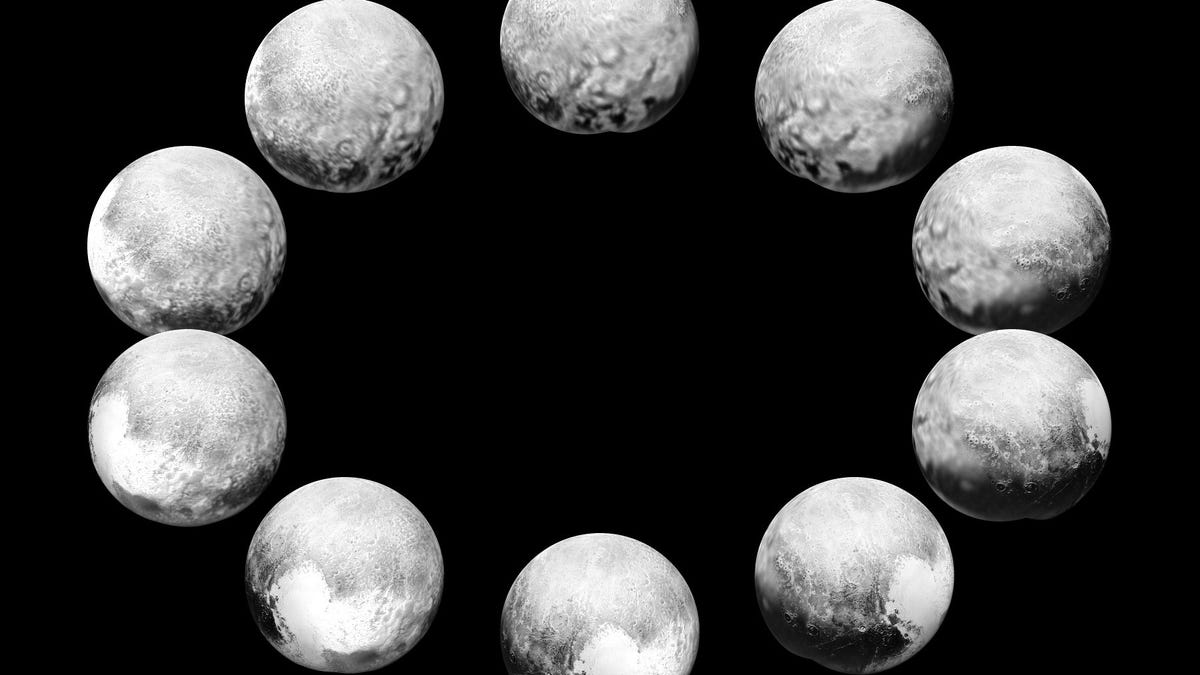See a whole day on Pluto in one NASA image
NASA's New Horizons spacecraft witnessed and photographed Pluto's rotation during a day in the life of the dwarf planet and its largest moon, Charon.
Be grateful you don't work in an office on Pluto. A single day on the dwarf planet takes 6.4 Earth days. You would be watching the clock so hard it would fall off the wall. NASA's New Horizons spacecraft had the luxury of a long approach to Pluto as it came in for a close flyby on July 14 of this year.
New Horizons took a series of paparazzi shots from distances ranging between 5 million miles and 400,000 miles (between 8 million kilometers and 645,000 kilometers). NASA compiled these into a single image to show all the faces of Pluto over the course of a single day. The fuzzier images of Pluto's swirly-looking backside are taken from greater distances the images showing the light-colored heart-shaped region.
Pluto's largest moon, Charon, has the same day-length as Pluto. NASA also gave Charon a day-in-the-life treatment based on a series of New Horizons images. Charon doesn't have the same dramatic surface features as Pluto, there's no telltale heart, but a close inspection shows variations in light and dark areas and deep canyons that rotate out of view as the moon shifts. You can see the Charon pictures at the end of this article.
New Horizons launched in 2006 on a lengthy mission to study Pluto and its satellites. The mission peaked with the dramatic July 14 close flyby, but the spacecraft is in the midst of the yearlong data dump required to send all it found back to Earth.
Scientists are busy sorting through the information as NASA continues to release fascinating details about the dwarf planet. The space agency released the Pluto-in-a-day image on Friday.
Similarly, on November 12, NASA issued a "psychedelic" technicolor image showing the dwarf planet in false color. All these different views of Pluto are helping researchers understand more about the landscape and geologic makeup of the fascinating dwarf planet that was once considered a full-fledged planet before its demotion in 2006.
Charon's surface features aren't as dramatic as Pluto's.


